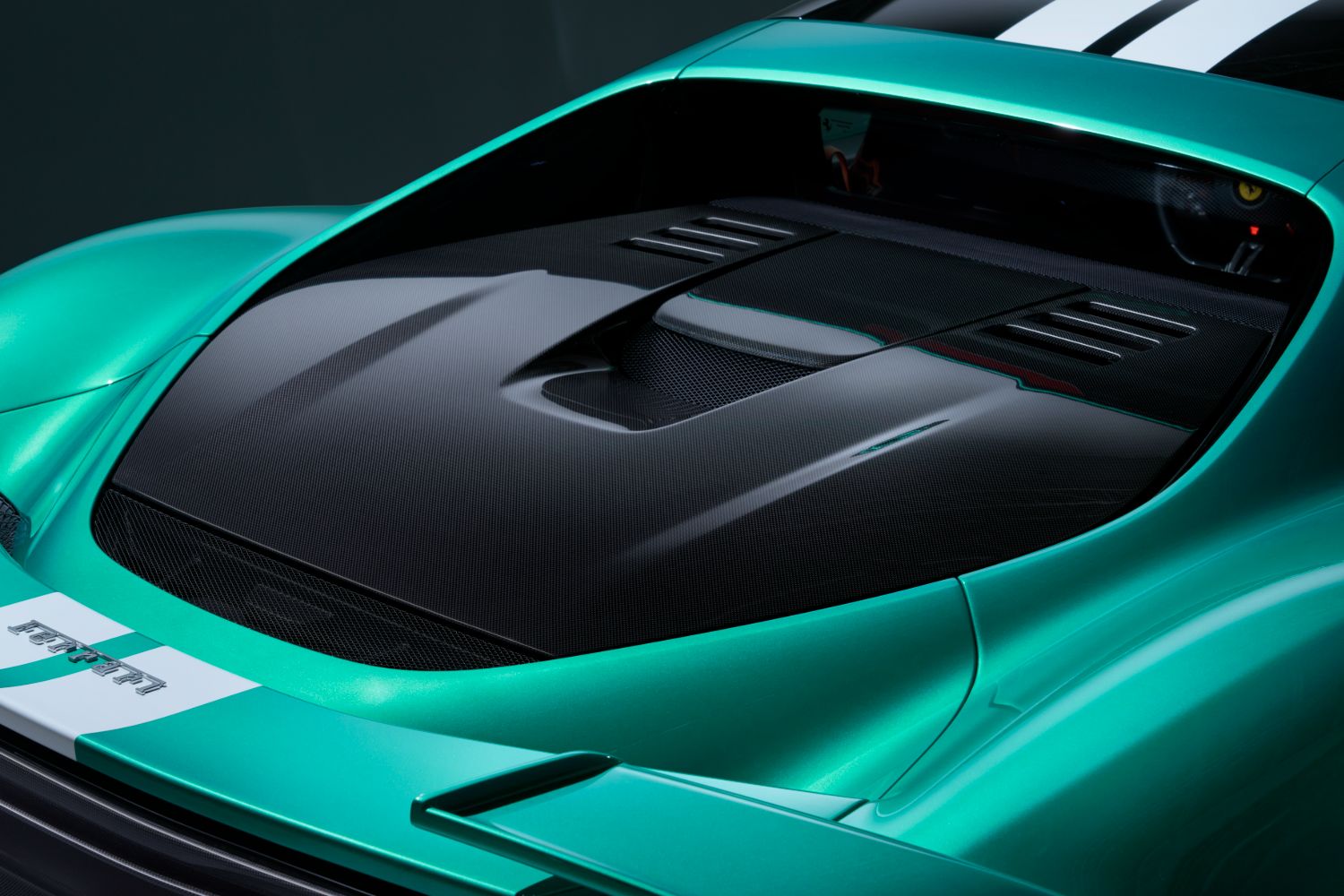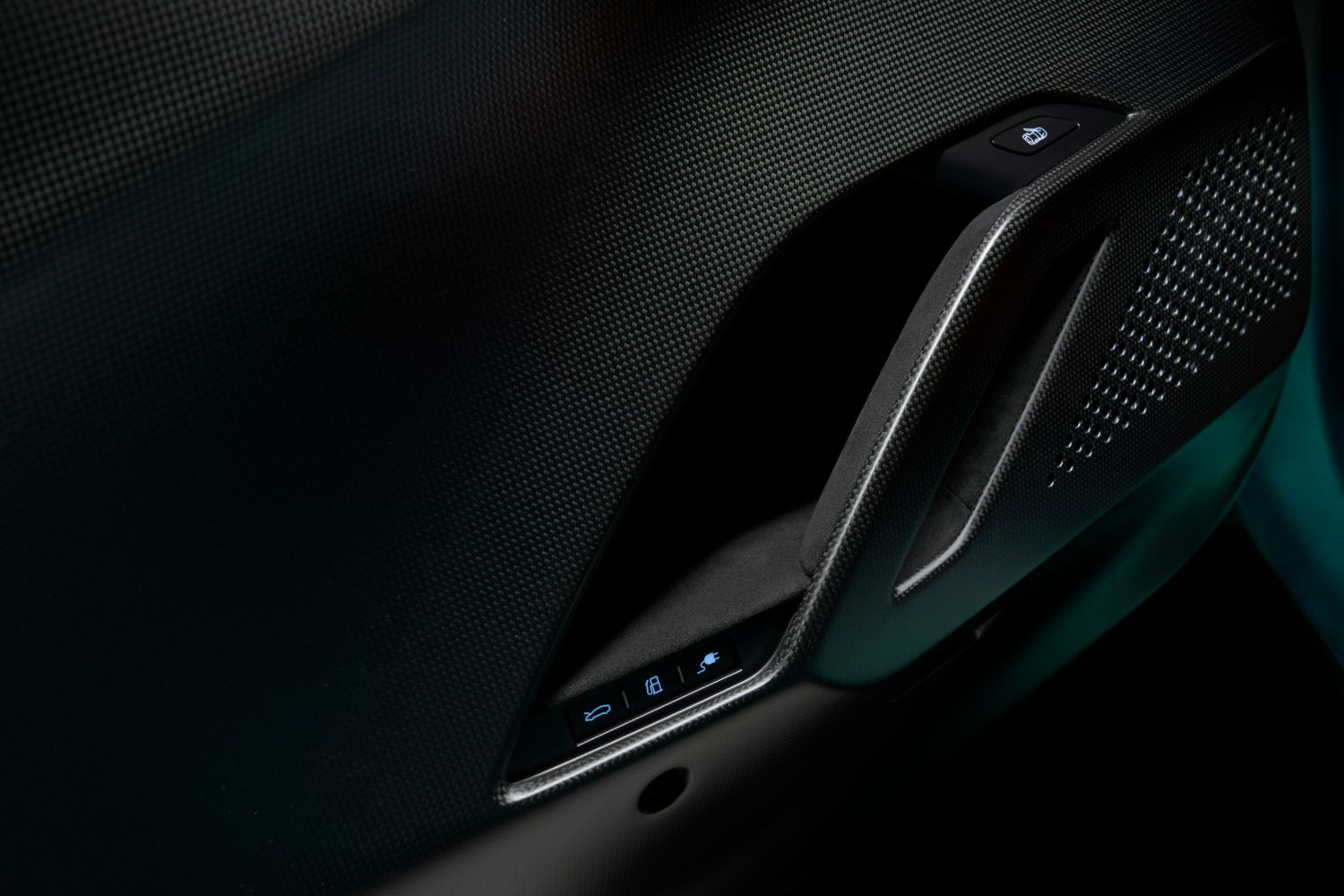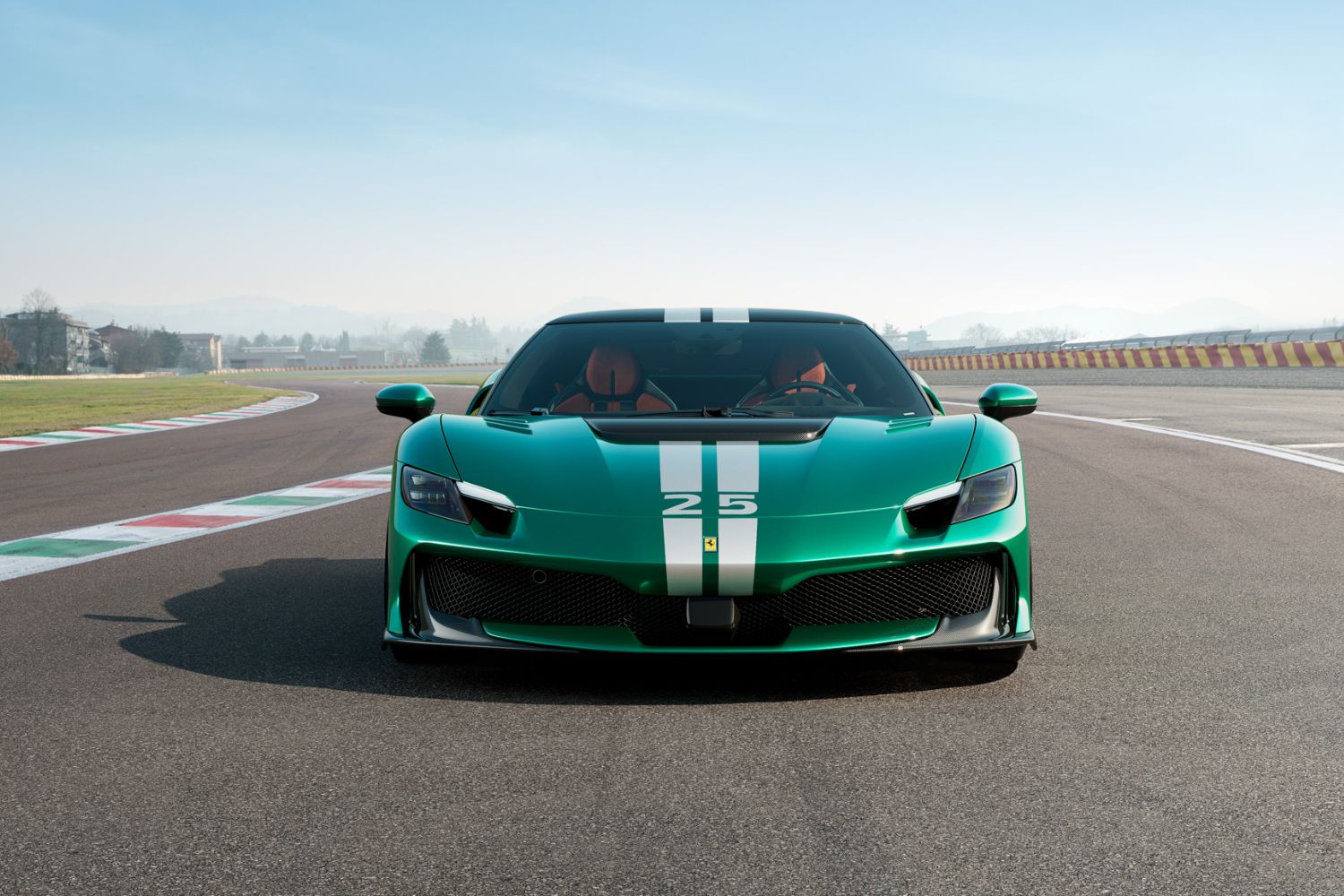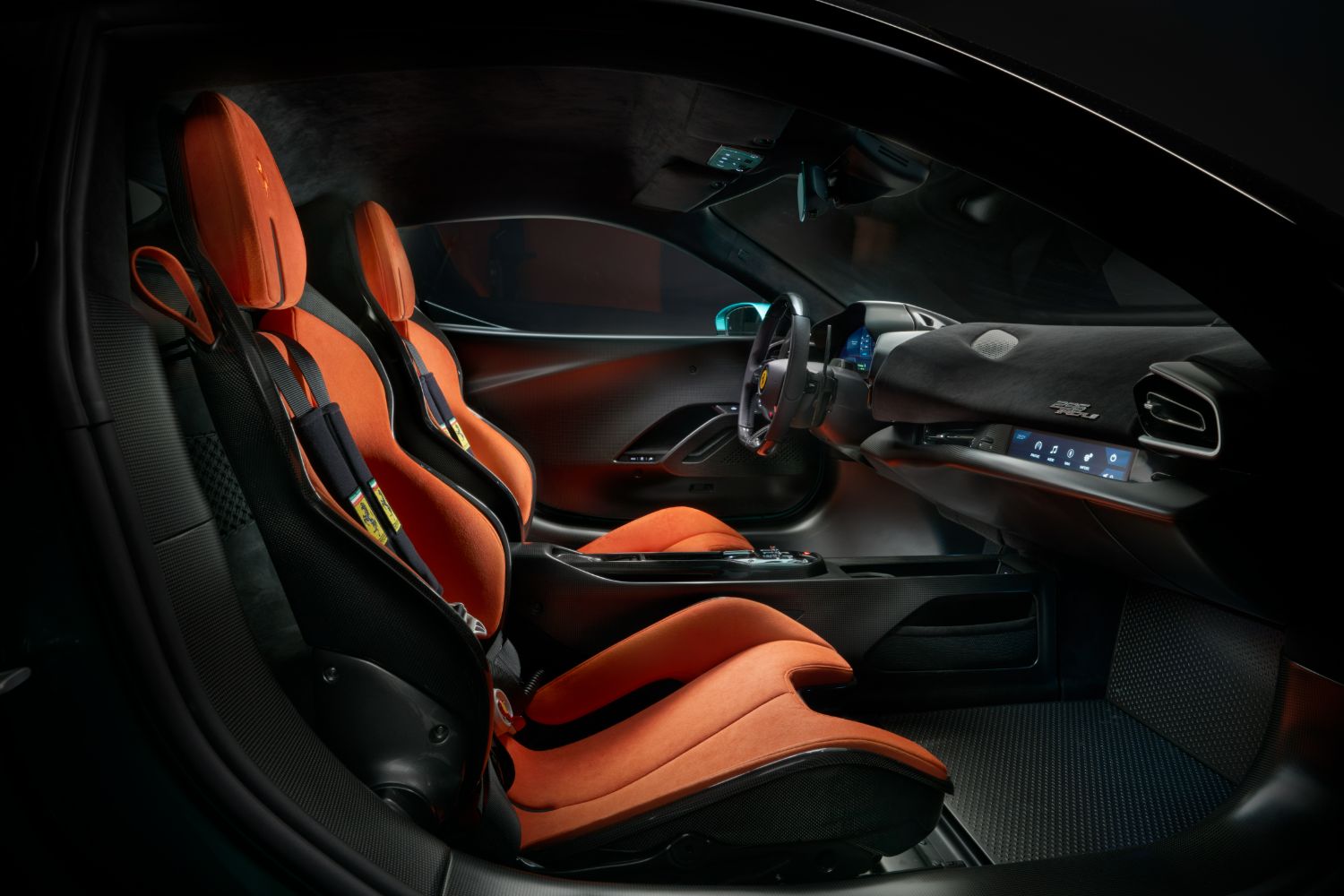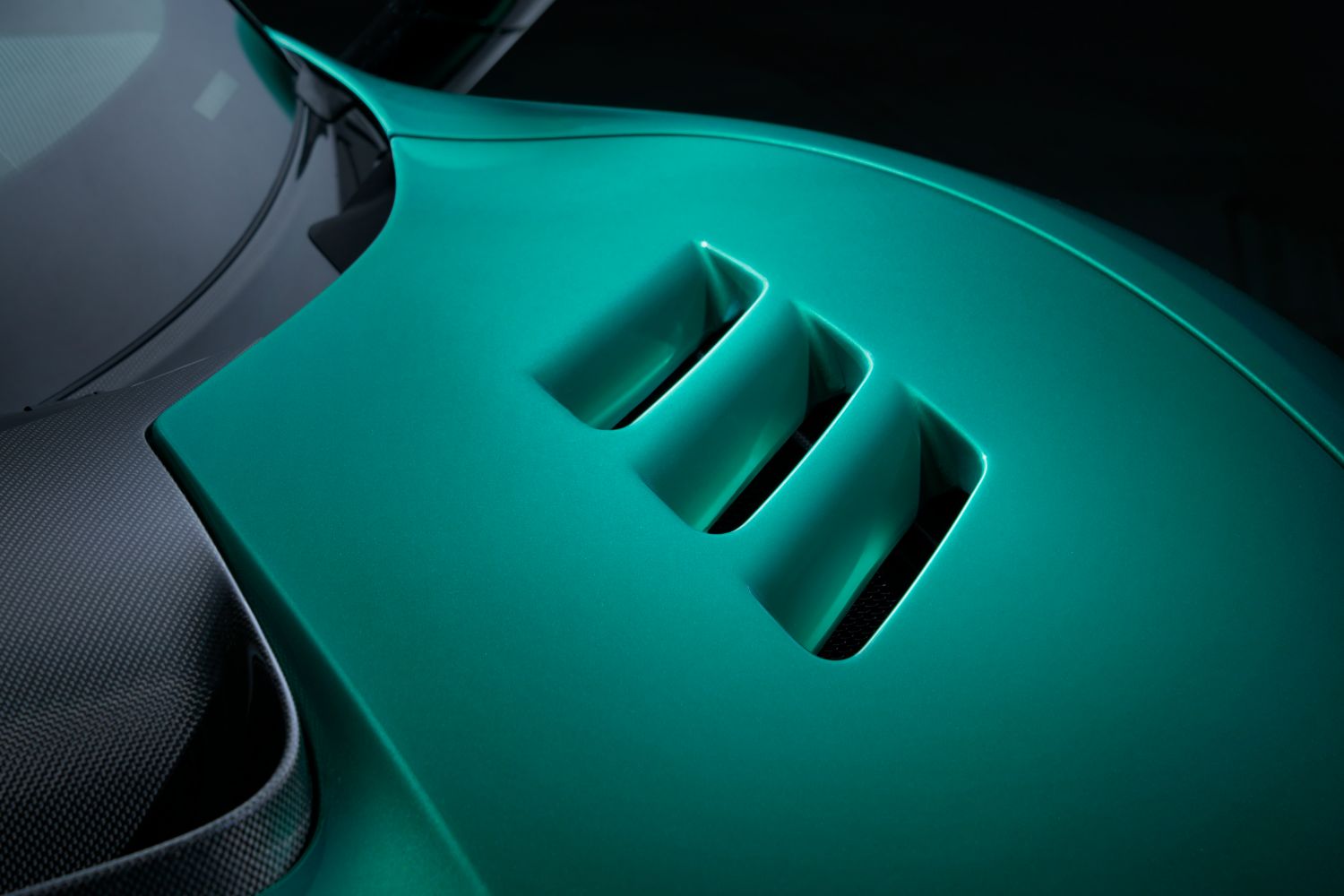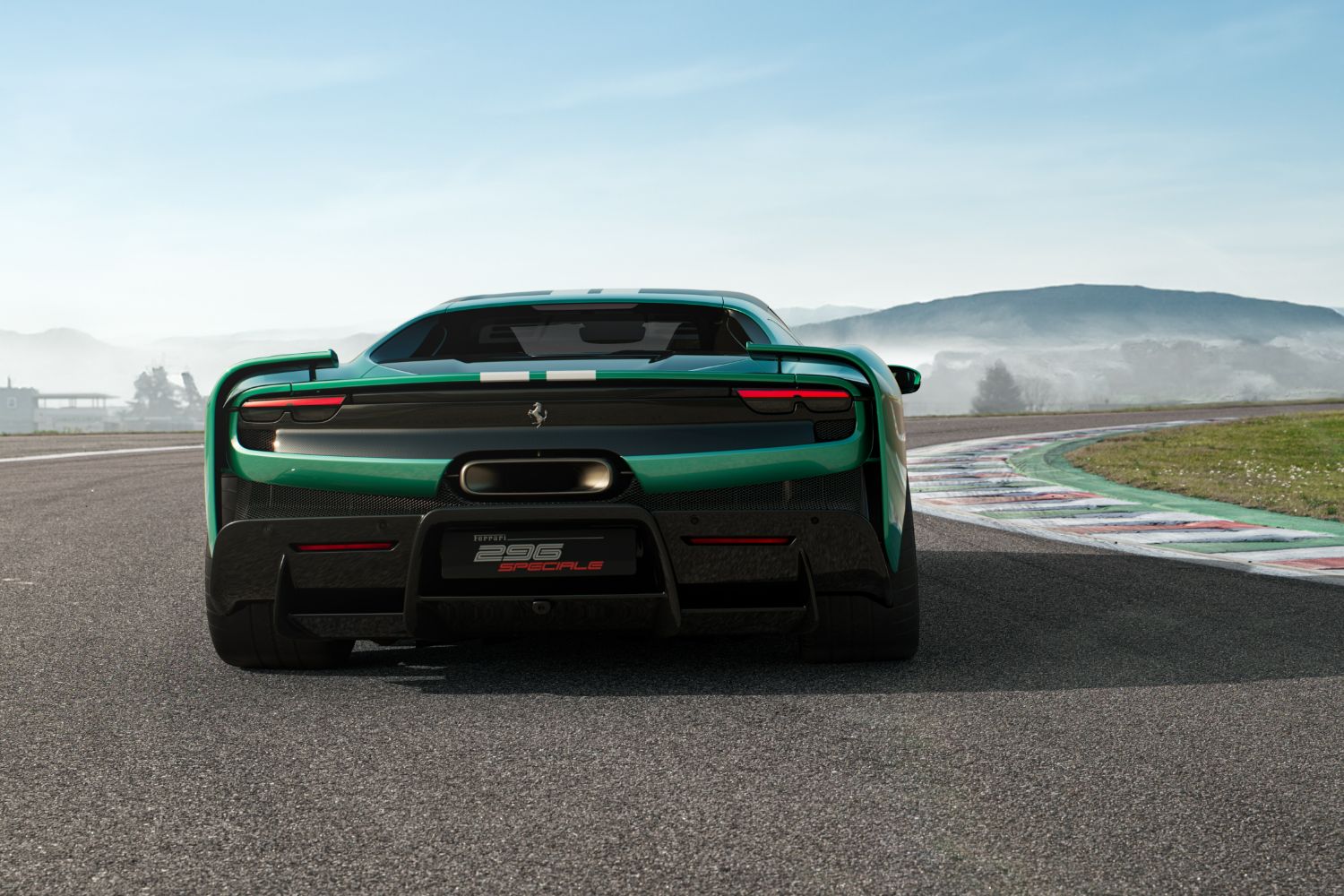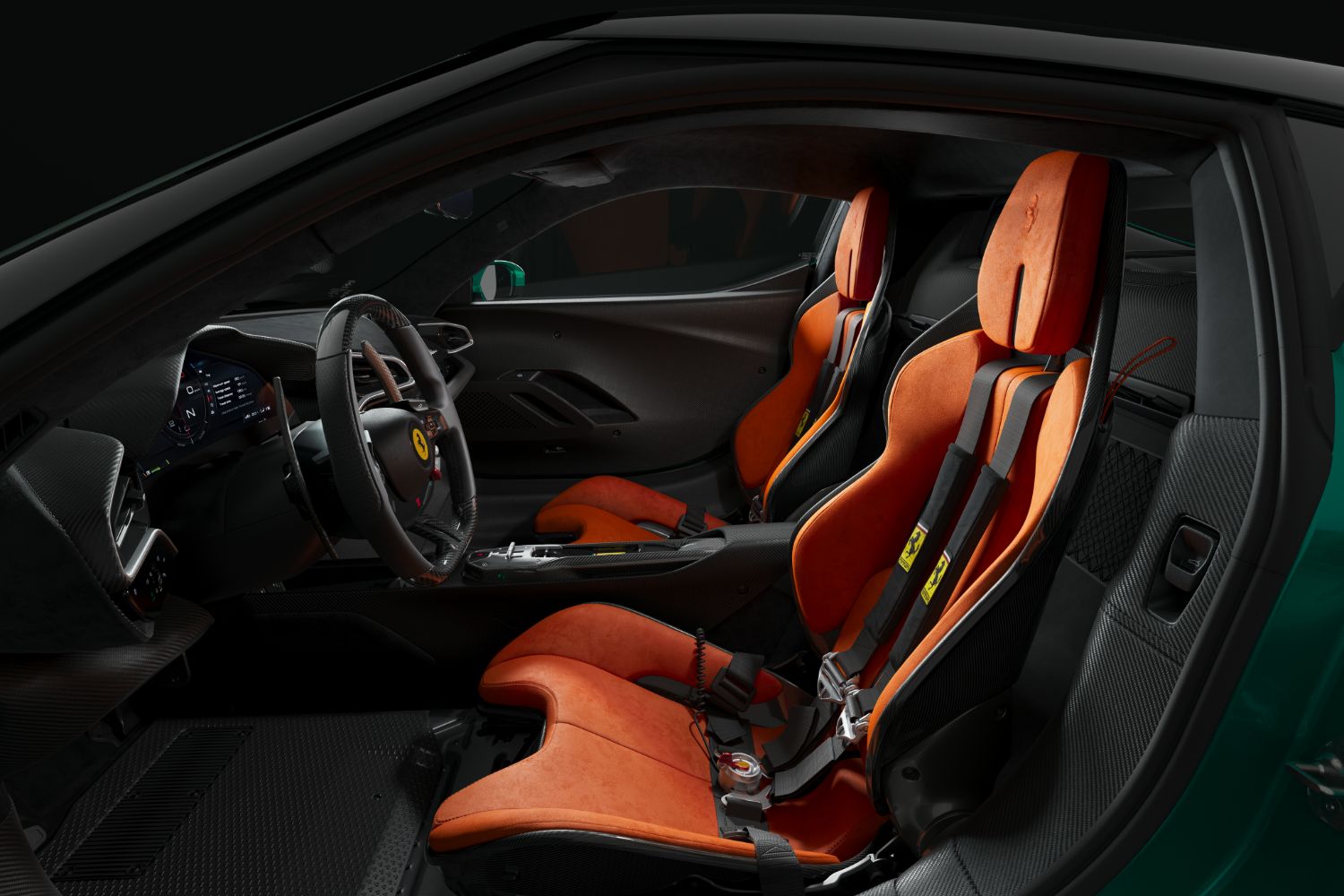Ferrari has shown off its much-anticipated 296 Speciale, the latest in a line of lightened and more focused mid-engined sports cars, whose lineage dates back to the 430 Scuderia.
Like that Scuderia, the 296 Speciale has been inspired by Ferrari's racing experience, both from its famed F1 team and its Le Mans-winning Hypercar and GT3 squads. The Speciale is lighter - by 60kg - and has more downforce than the standard 296 GTB.
It looks… green?
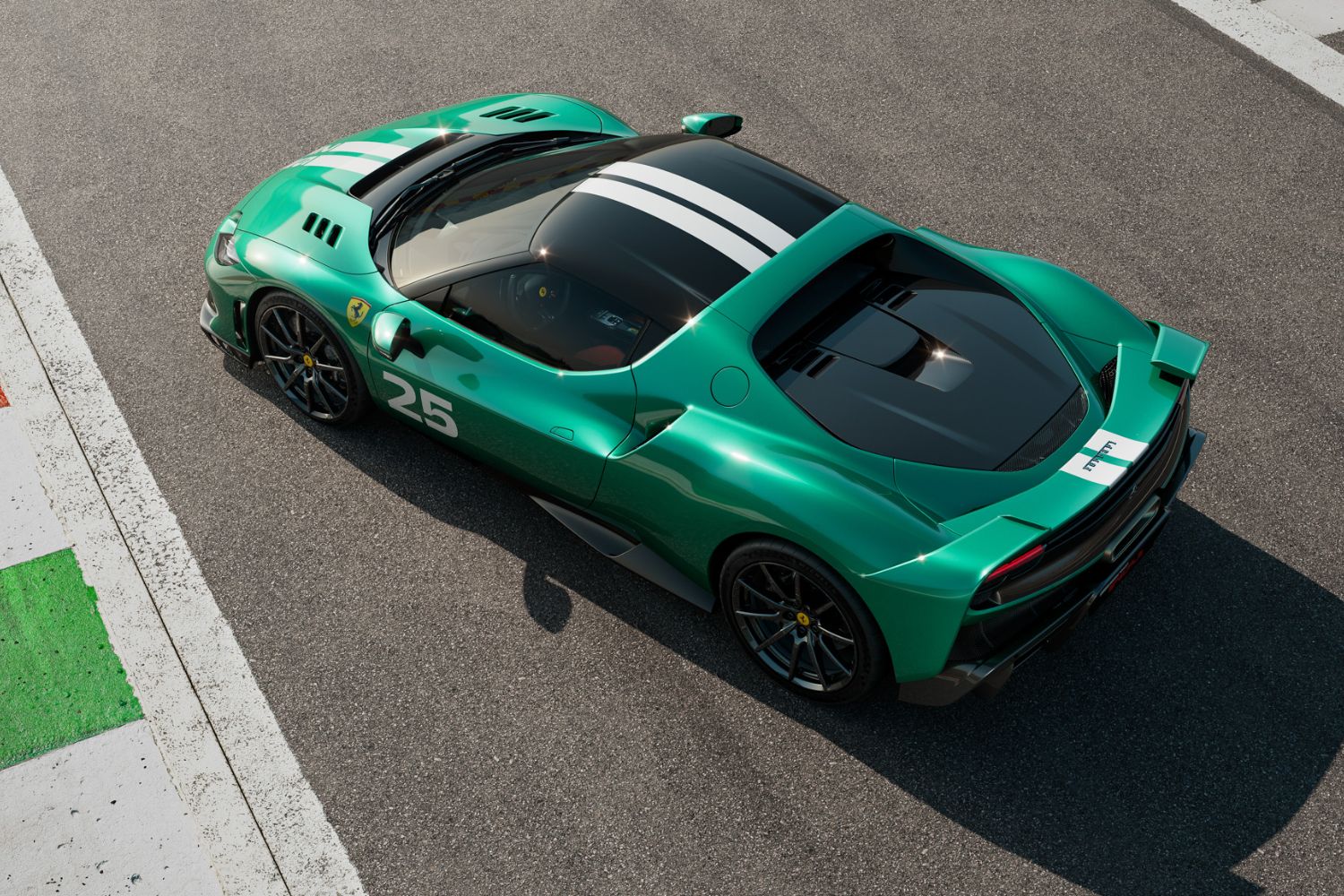
Yup. The 296 Speciale also comes in this dramatic new colour, a bright metallic green called Verde Nürburgring, named for the famous race circuit in Germany, and which draws a link between this road car, and the 296 GT3 racer, which won the gruelling Nurburgring 24hrs race two years ago, the first time a Ferrari had won that race.
In styling terms, the 296 Speciale gets some visual upgrades to signify its position above the standard 296 GTB in the lineup. The nose gets a more aggressively scooped-out shape, while the nose gets a 'suspended splitter' aero section, along with bigger air intakes which Ferrari says creates an effect like that of a three-hulled trimaran racing yacht.
At the rear, there are new fixed-wing elements at the outer edges of the body, while the body-coloured sections at the back of the 296 Speciale have been made smaller for a more focused, motorsports-y look. The rear diffuser is also larger and spreads out further towards the sides of the bodywork, while there's a new exhaust design influenced by the hybrid F80 hypercar. The engine cover has also been changed for a darker mesh look and the Speciale gets new five-spoke light forged alloy wheels.
What's the cabin like?
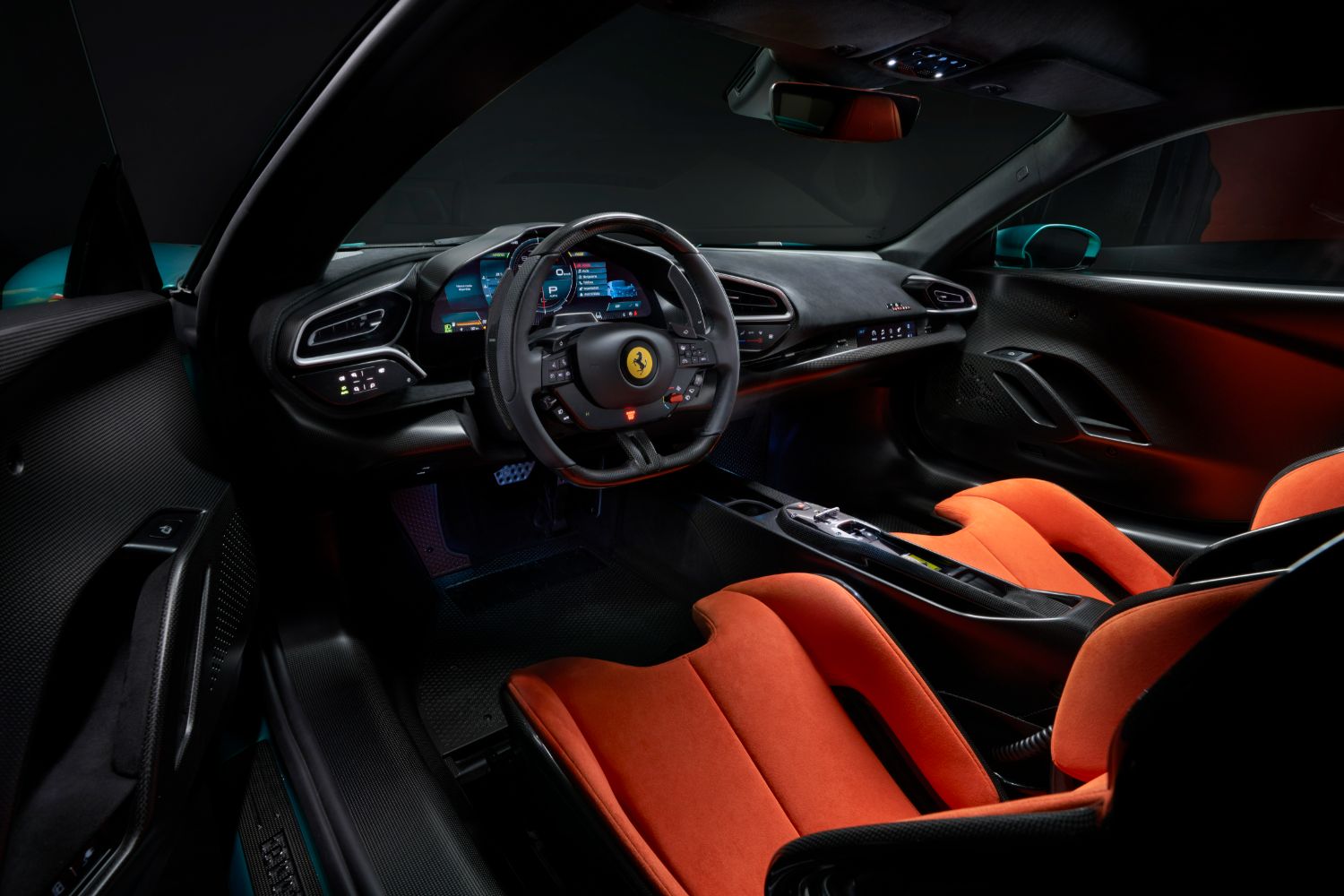
Inside, it's basically the cabin of the 296 GTB, but more stripped-out and covered in lashings and lashings of carbon-fibre and Alcantara man-made suede, as befits a car with racing heritage. The door panels are new, with a simpler grab handle design, while the speakers for the stereo poke through simple cut-outs in the carbon-fibre. The buttons which select the gears, mounted down on the centre console, have also been raised up a little, which Ferrari says makes them a more obvious tribute to its classic 'open gate' manual gear shifters of yore.
Has Ferrari changed the engine?
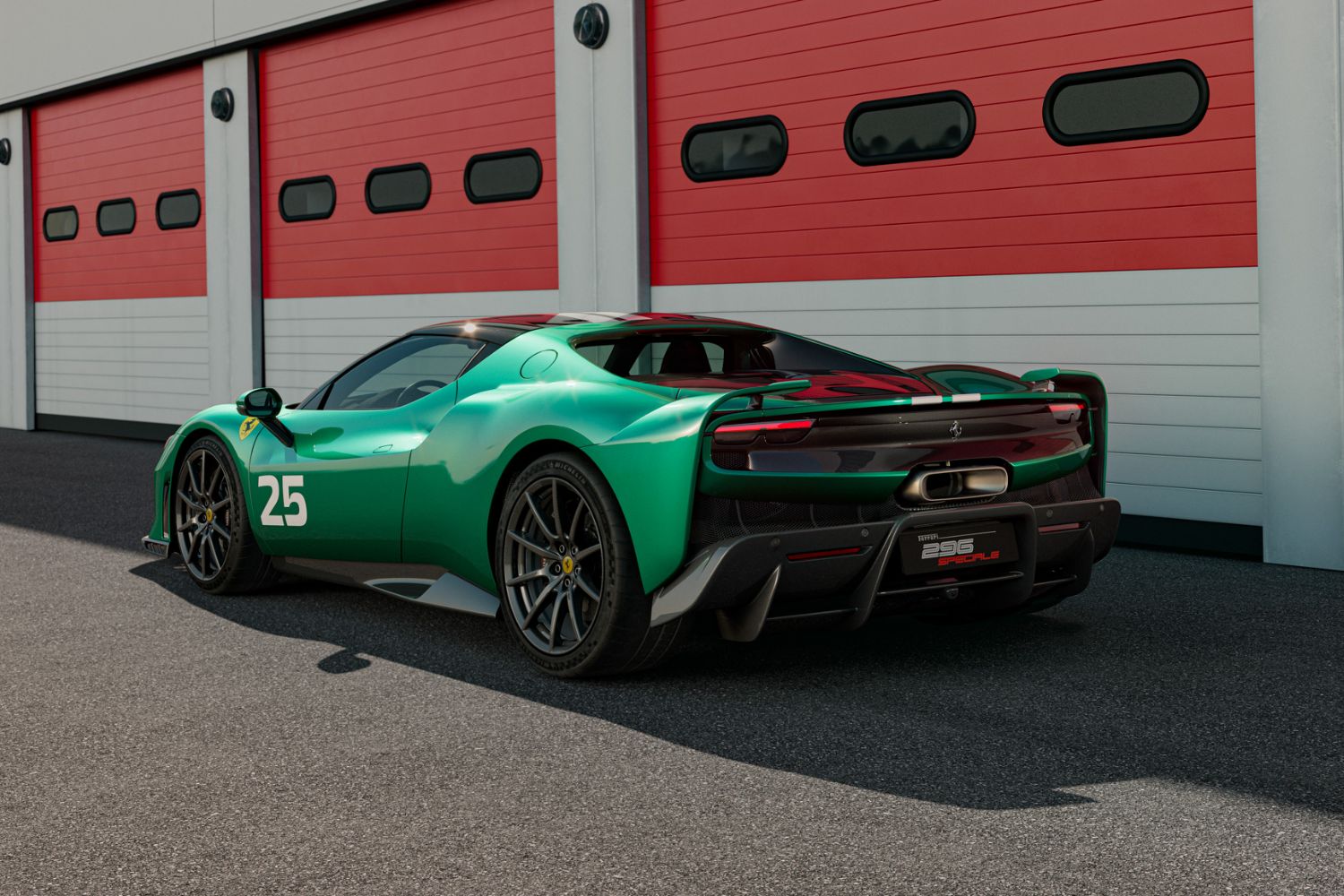
As with the standard 296 GTB, power comes from a 2.9-litre twin-turbo V6 petrol engine, combined with a plug-in hybrid system. Tweaks to the engine and the electric motor mean that the Speciale gets an extra 50hp compared to the standard 296 GTB, bringing it to a whopping 880hp.
700hp of that comes from the engine, and thanks to experience of racing this engine at Le Mans (the twice-winning 499 prototype car uses a development of the same unit) Ferrari has found 9kg of weight savings thanks to lighter castings, connecting rod and piston assemblies, and engine studs. That's 15 per cent of the total 60kg weight saving for the whole car.
The engine now uses a higher pressure in the combustion chamber, with altered injection techniques based on Ferrari's F1 experience. Even the engine block and the crankcase have been machined to remove any un-wanted metal, saving 1.2kg. The turbos are lighter, and so too is the titanium exhaust system.
Best of all, Ferrari says that the engine sounds even better, benefitting from new acoustic ducts, which have been 3D digitally modelled to create the most crackle and pop for your buck. A clever system of tubes carries the engine sound straight into the cabin.
What about the hybrid system?
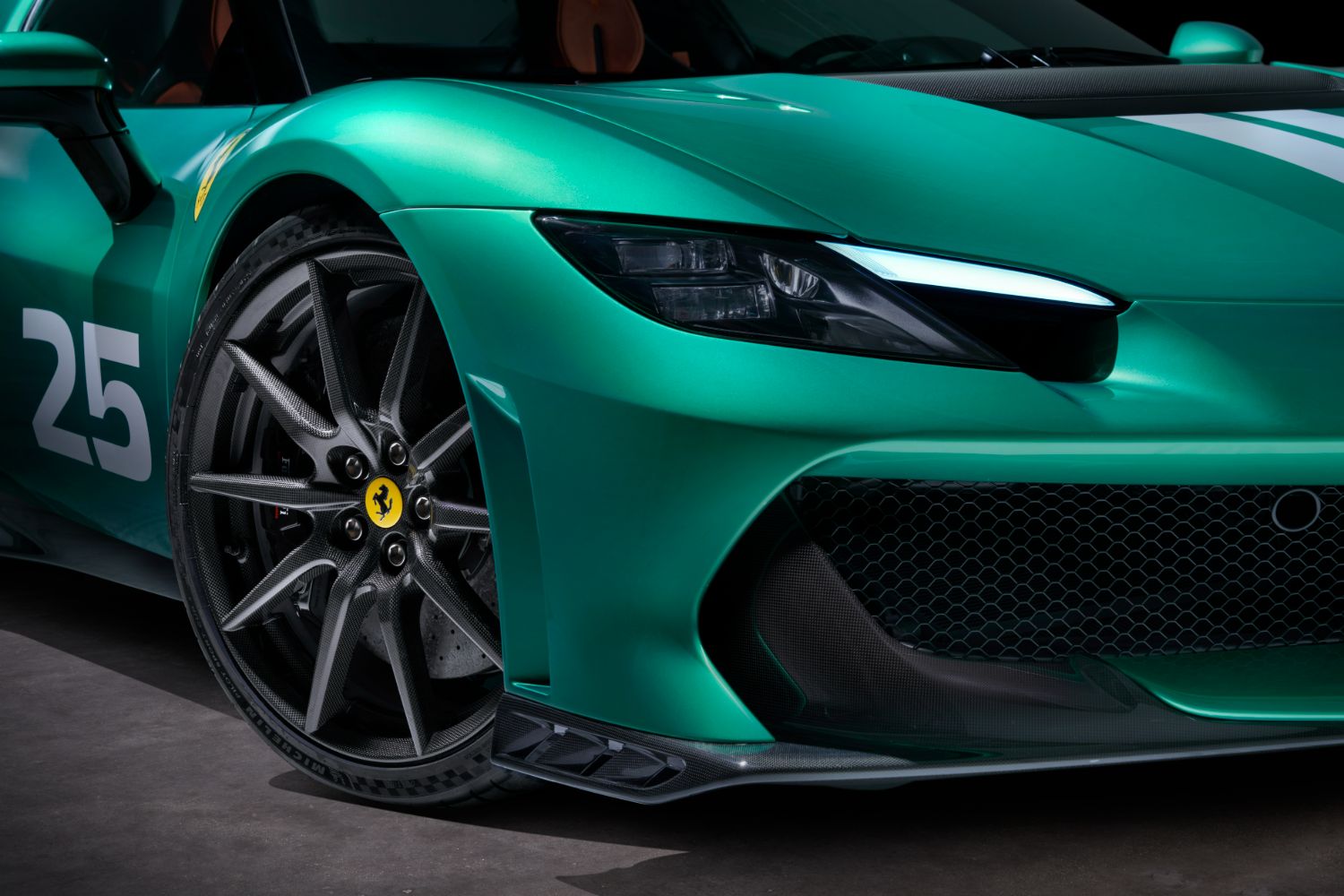
The electric motor for the plug-in hybrid system is largely unchanged, but does get a little more power - 13hp more - and it can drive the 296 Speciale on its own for up to 25km with a full charge of its 7.45kWh battery.
The hybrid system has four driving modes - eDrive, which locks it into electric power assuming that there's enough charge; hybrid, which is pretty self-explanatory; Performance, which is ditto; and Qualify, which uses the extra boost function of the electric motor, allowing it to deliver 180hp from speeds of 6,000rpm upwards, for maximum performance from the powertrain.
The eight-speed DCT paddle-shift gearbox is basically the same as that of the standard 296 GTB, but there is new software for faster responses, and the electric motor helps to keep the power going during the mid-gearshift milliseconds that the engine is disconnected from the wheels.
Does the Speciale get any special aerodynamic tricks?
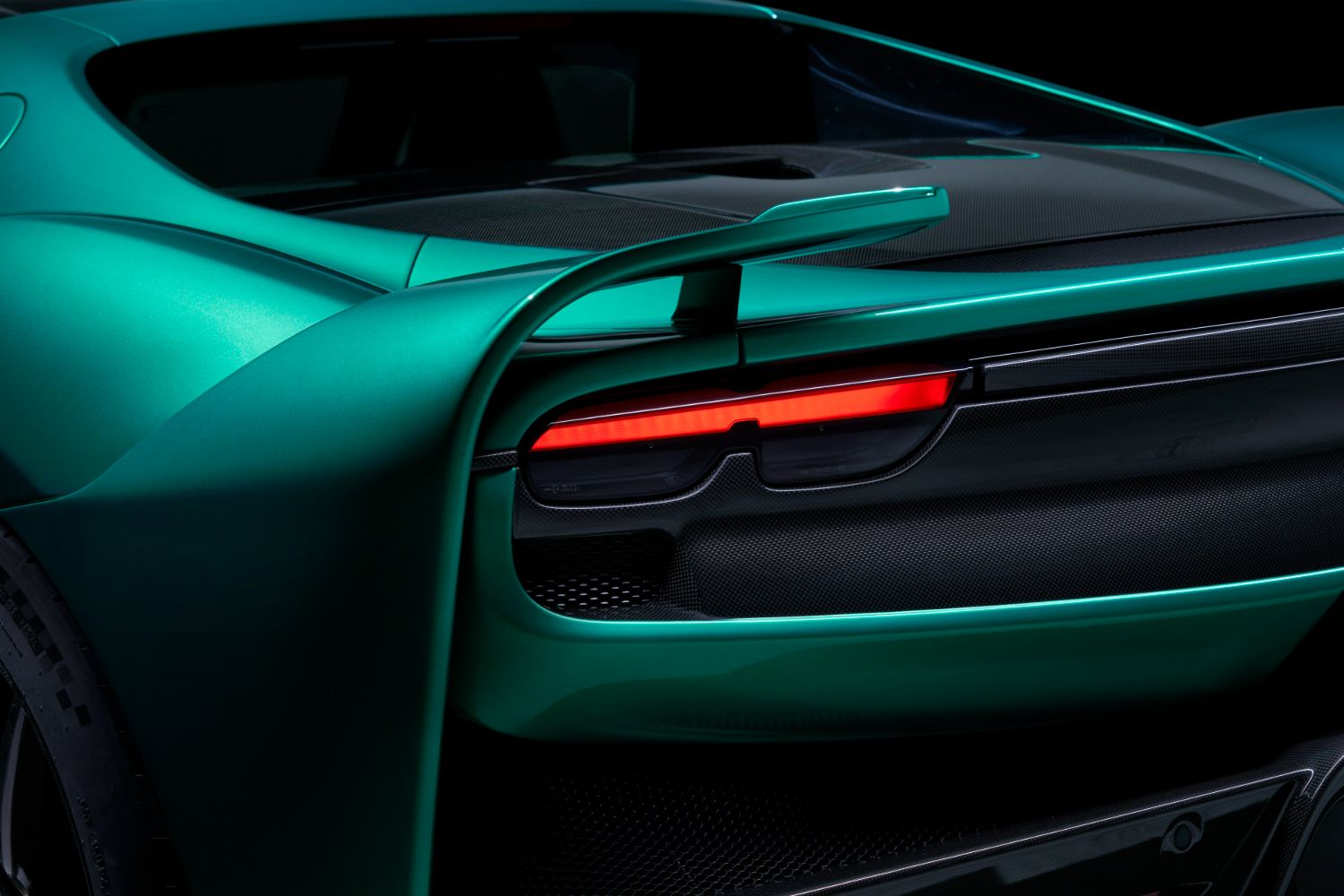
In aero terms, the Speciale sticks itself to the road with 435kg of peak downforce at 250km/h, some 20 per cent more than the standard 296 GTB. Ferrari says that it has taken particular inspiration from the 296 Challenge one-make racing series for the Speciale's aero package.
Those fixed rear winglets - inspired equally by the FXX-K trackday special car and the 296 Challenge cars - are key to this, as the vertical fin optimises wake management to reduce drag, while the profile of the horizontal surface generates downforce. They also improve cooling efficiency, helping to draw hot air out of the engine bay and through the radiators.
Between the foxed winglets is the same adjustable powered rear centre wing from the standard 296, but it's faster-reacting here on the Speciale, and it comes with a new 'Medium Downforce' setting too.
Lower down, the rear diffuser, the vortex generators of the underbody, and the lateral venturi tunnels all contribute to the downforce total. At the front, there's a duct which links the top of the bonnet with the bottom of the undertray, channeling air out from under the nose, over the roof and to the rear wing. Ferrari says that front downforce is now more linear and consistent as a result, helped by the new louvres which further help to manage airflow by reducing high pressure airflow in the wheelarches. Even the front bumper is designed to 'outwash' air around the front wheels, just like a Formula One car's front wing while the shape of the front wheelarches actually helps to clean up the airflow that reaches back to the rear wheels.
Downforce is great, but the airflow has to cool the car too, and those clever Ferrari engineers have worked out how to cool a hotter and more powerful engine without making the radiators any bigger nor heavier than those of the standard 296. Brake cooling has also been improved.

As has the chassis and control systems. Ferrari says that it has carefully tuned the Speciale's responses around 'lateral' movements (such as steering and turning), 'longitudinal' movements (accelerating and braking), as well as managing gear shifts and making all the appropriate noises - sound being a key factor of vehicle dynamics as far as Maranello is concerned.
The 60kg weight saving obviously helps, but Ferrari has also been diving into the fine details, redesigning the anti-lock braking system to hold the tyres on the very fine edge of lock-up for longer, for maximum braking power; finding extra boost power from the electric hybrid drive, with a 'push-to-pass' style function that has its own display on the dash, telling you how much extra boost time is left. This will be different depending on how and where you're driving. At Ferrari's own private Fiorano race circuit, for instance, the extra boost function can be used 14 times over two laps, while at nearby Mugello, the function allows for a total of 15 boost bursts over a single lap.
The suspension is essentially the same as that of the 296 GTB, but stiffer and with a lower roll angle. Electronically adjustable dampers, from Canadian firm Multimatic, are fitted as standard and even the suspension's springs are made of titanium. A special version of the Michelin Pilot Sport Cup2 tyre has also been developed for the 296 Speciale.



